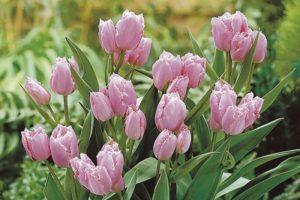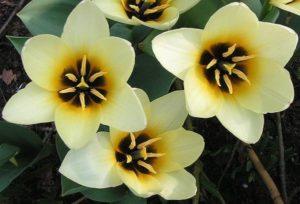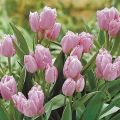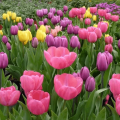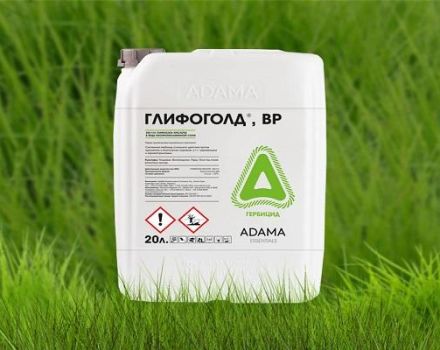Description of the best varieties of parrot tulips, planting and care
Parrot tulips differ in appearance, they are like motley birds with bright, colorful plumage. Flowers are by nature very beautiful and can decorate any area. But they do not like "neighbors", and they are not too resistant to diseases, they do not tolerate bright sun, but they cannot grow in the shade either. However, any plants should be carefully looked after, and tulips are no exception.
General description and characteristics of parrot tulips
Plants of this species have peculiar characteristic features. Having seen a parrot tulip once, you can hardly confuse it with another flower.
Since this plant has a number of features, they should include:
- A fragile and thin stem that can barely hold the bud and can break in a gust of wind.
- Petals of unusual shape, reminiscent of the "feathers" of a bird.
- The buds can have a different shade, there are even purple, almost black tulips. There are two-color ones.
- They bloom early, beginning in early May and ending at the end of the month, but among tulips they are considered "late."
Advantages and disadvantages
If we talk about the advantages, then the following positions can be distinguished:
- look beautiful on the site;
- delight with a variety of varieties;
- look spectacular in landscape design;
- fit under the cut.
Naturally, the main advantage of flowers is considered to be their beauty and uniqueness. But, in addition to the advantages, there are also disadvantages:
- They require some care.
- Susceptible to diseases and pests of bulbous plants.
- Suitable for a certain climatic zone.
- Not always "supportive" to neighbors.
When planting flowers, you always face certain problems, but they can be solved, with the right approach. The main thing is to take into account the characteristics of the variety, soil and climate.
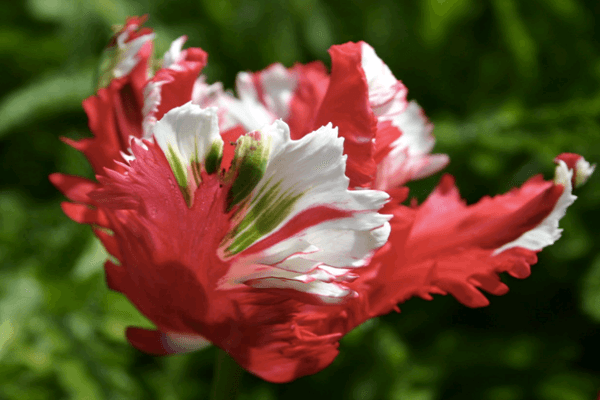
Varieties of flowers
There are different varieties of parrot tulips. They have their own color features, characteristics. Let's take a look at the most common and popular types.
Rococo
The peculiarity of the variety is the combination of several colors and shades. Red is considered the main color; it can be combined with a purple, burgundy hue. The height of the plant is no more than 50 centimeters, the bud is 8 centimeters.
Fleming Perroth
Differs in a bright shade and volumetric pattern of petals. The main color is yellow, combined with red. Suitable for the design of slides and paths.
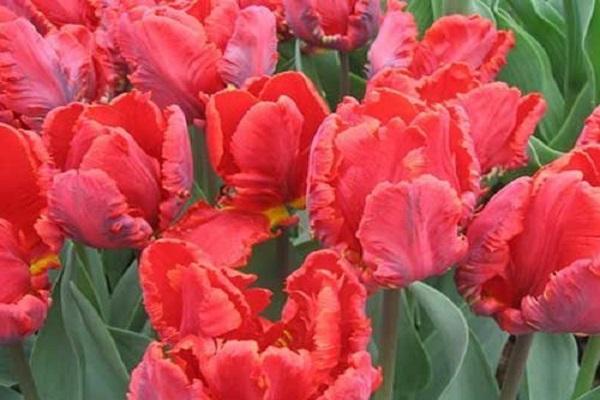
Texas Gold
You can learn about the features of the tulip from the name of the variety. The color of the petals is golden, green on the outside.
Black Perroth
Tulips of this variety have a burgundy, dark red hue. The pattern is not large, on the outside the petals are purple, dark.
Fantasy
Buds with delicate pink petals and green inserts in the middle.

Epicote Perrault
Red-orange flowers with evenly cut petals along the edges and interspersed with green.
Estela Rizhnwald
This tulip variety has red and white buds. Blotches of shades are even, which allows them to form a flat pattern.
Blue Perroth
It differs from other varieties not only in its lilac-blue tint of flowers, but also in its powerful stem.

Texas Flame
Yellow buds, which are decorated in the center with red stripes. The disadvantage of this variety is the rapid loss of decorativeness.
Webers Perroth
The variety is distinguished by voluminous buds, which are painted in pink; a creamy shade prevails in the lower part.
How to plant parrot tulips?
Since we are talking about bulbous plants, it is worth adhering to certain planting rules. Let's talk about how to plant and grow beautiful tulips.

Choosing a landing site
When choosing a place for planting a tulip, keep in mind that it must meet the following characteristics:
- Avoid planting the flower on the sunny side as it is sensitive to the light of the sun and may suffer from it. Choose shade or partial shade, but so that the place is not damp or humid.
- Since the stem of the plant is thin and fragile, it cannot hold the buds in strong winds, and often breaks. To avoid this, you will either have to make supports or choose a suitable place.
- When choosing a place, keep in mind that you should not plant tulips where bulbous plants used to grow - choose another territory.
Preparing the bulbs
Inspect the bulbs for characteristic changes before starting planting. If there are any, then remove the bulbs and plant only "healthy" ones.
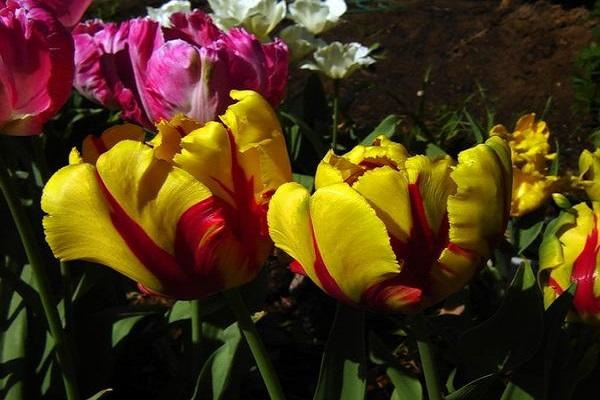
Landing technology
The bulbs are planted to a depth of 10-15 centimeters, the distance between the rows is no more than 20 centimeters. The bulbs are planted in November, they remain in the ground for the winter.
Further care
In fact, tulips require little or no maintenance. If you have planted flowers, then feed them immediately. Repeat the procedure when the first green leaves appear.
Attention! In the process of growth and development of flowers, monitor their appearance; if you see damaged, dried out or diseased shoots, remove them as soon as possible.

Digging and storing bulbs, reproduction
The plant is propagated by daughter bulbs. If you decide to dig them out, then carry out such procedures 1 time in 2-3 years.
Storage conditions:
- Keep the bulbs cool.
- Keep the air in the room dry.
Disease and pest control
In order not to face certain problems when planting plants, adhere to the following rules:
- do not plant bulbs in the same place;
- do not forget to feed the plants with mineral fertilizers;
- inspect for damage before landing;
- monitor the quality of the soil;
- do not plant next to or together with other bulbous plants.
If you notice that the flowers have changed in some way, spots have appeared on them, or the shoots have begun to dry out, remove them, cut them off, and dig up the bulbs.
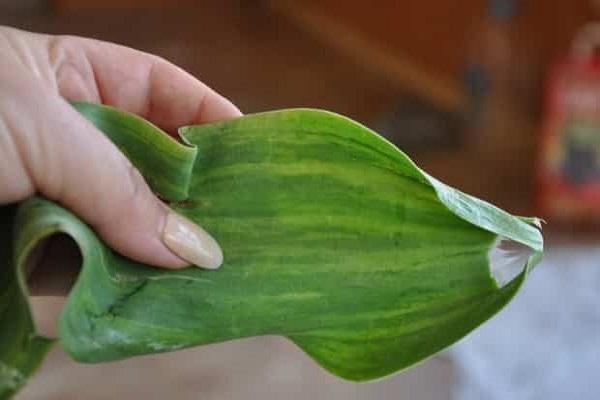
Use in landscape design
If you decide to plant tulips, you can pick up non-bulbous “neighbors” for them, which will not compete with the beauty of tulips.These are forget-me-nots, daisies, any herbaceous plants that do not differ in bright inflorescences. Often tulips are combined with peonies, as they bloom late.
Reference: you can cut flowers and decorate your house with them, they look impressive in medium-sized vases.
Parrot tulips are beautiful and unusual flowers that can decorate any garden. Their planting has its own characteristics and differences, but if you follow the rules, you will end up with plants of different shades of extraordinary beauty.
